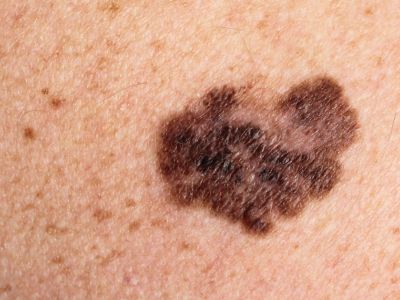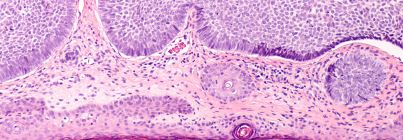Skin Cancer Treatments
Expert Skin Cancer Care with Advanced Treatments You Can Trust

If you are diagnosed with skin cancer, seeking care without delay is essential. Early detection and treatment greatly improve the chances of curing the disease and preventing it from spreading to other parts of the body. Timely care not only helps protect your health but also leads to better outcomes and, in many cases, less invasive treatment options.
At UC Davis Health, you can feel confident knowing you are in the hands of highly trained experts. Our skin cancer specialists are board-certified dermatologists with additional fellowship training in advanced skin cancer management. This specialized training ensures that your care is guided by the latest research, innovative techniques and proven treatment strategies.
Skin Cancer Treatments We Offer
Your physician will review treatment options with you. Depending on the skin cancer type and severity, you may undergo one or more of these treatments:
- Mohs micrographic surgery
- Slow Mohs surgery
- Curettage and electrodesiccation
- Excision
- Topical chemotherapy
Mohs micrographic
During Mohs surgery, your physician surgically removes, or cuts away, cancerous skin tissue. This procedure is successful at treating basal cell carcinoma, squamous cell carcinoma and other types of skin cancer. Nationwide, the cure rate is 99% for skin cancer treated for the first time with this modality. The cure rate for skin cancer that returns (a recurring cancer) is 94%.
Your physician removes cancerous tissue in stages. This approach ensures:
- Complete removal of the tumor and lingering cancerous cells
- Preservation of surrounding healthy skin
- Minimization of scarring, as much as possible
This procedure takes place during one appointment under local anesthesia, which numbs the treatment area. You will receive safe care at UC Davis Medical Center, Sacramento’s top hospital, and go home the same day.
During the procedure, your physician:
- Injects a numbing agent into the treatment area
- Uses a scalpel to remove the cancerous tumor along with a thin, slightly larger layer of tissue
- Temporarily bandages the surgical site
- Examines the tissue under a microscope to check for cancer cells
- Removes and examines more tissue if cancer is still present
- Repeats these steps — limiting tissue removal to areas that have cancer cells — until there’s no sign of cancer
- Closes the wound with stitches, if needed
Slow Mohs surgery
Our skin cancer experts perform a modified Mohs surgical procedure (slow Mohs surgery) to treat melanoma. Not all dermatologists have the training and experience to perform this more advanced procedure. In addition to melanoma, we also use slow Mohs to treat other rare or advanced forms of skin cancer.
Your physician performs the same Mohs surgery steps, except tissue samples are sent to our on-site Dermatopathology Service for rapid processing. There, our highly skilled lab experts use special stains to identify melanoma cells. Results can take a day or two. Slow Mohs surgery can take place over several days.
Curettage and electrodesiccation
Curettage involves scraping away cancerous tissue with an instrument called a curette. Your physician then uses an electric needle, or electrode, to heat and destroy lingering cancer cells.
Your physician may recommend this procedure if you have superficial (only on the top layer of skin) basal cell or squamous cell cancer. This is a quick procedure that typically does not result in any downtime.
Excision
An excision procedure involves surgically removing skin and tissue. After removal of skin, the wound is often closed with stitches. Excisions can be done for both benign (non-cancerous) lesions and skin cancers that are off the face.
During an excision procedure, your physician:
- Injects a numbing agent into the surgical site
- Uses a scalpel to remove the skin and tissue
- Sends the tissue away to dermatopathology to confirm whether the lesion is cancerous or benign and/or assure the lesion has been completely removed (results may take up to two weeks)
- Closes the wound with stitches
Topical chemotherapy
Prescription topical chemotherapy creams treat superficial basal cell and squamous cell skin cancers. Superficial means that the cancer is limited to the top layer of the skin.
You apply the medication to the affected area as directed, usually once or twice a day for several weeks. Topical chemotherapy medications include fluorouracil and imiquimod.
Treatments for Precancerous Skin Growths
Years of sun exposure can cause actinic keratosis, a precancerous condition. When left untreated, these rough, scaly skin patches may turn into squamous cell carcinoma. We offer comprehensive treatment of actinic keratosis to reduce your risk of getting skin cancers in the future.
We offer treatments for actinic keratosis, including:
- Cryosurgery — Your physician applies liquid nitrogen to the affected area to freeze and destroy changed, or mutated, skin cells that can transform into cancerous ones.
- Photodynamic therapy — Blue-spectrum light activates a medicated, topical skin solution to destroy unhealthy skin cells. This treatment may take up to two hours.
- Topical chemotherapy — Your physician may prescribe a topical chemotherapy medication called fluorouracil or imiquimod. You apply this cream or ointment directly to the diseased area daily for several weeks.
- Laser skin resurfacing and chemical peels — Laser skin resurfacing is a type of cosmetic dermatology procedure that uses laser light to eliminate diseased skin cells. Chemical peels use an acid solution to achieve the same effect.
Contact Us
For more information or to schedule an appointment, please call 916-734-6111 or 800-770-9282.


